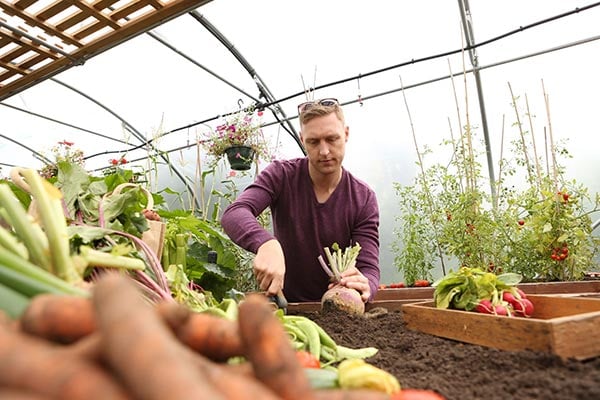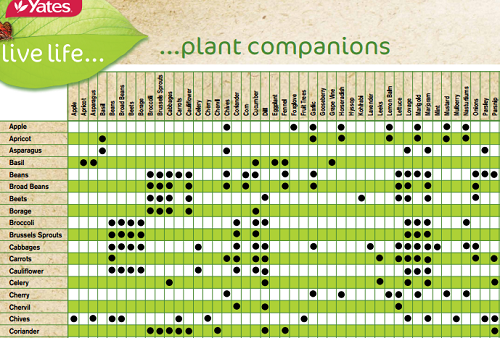The Ultimate Guide To Companion Planting For Vegetable Gardens
The Ultimate Guide to Companion Planting for Vegetable Gardens
Companion planting is a gardening technique that involves planting certain plants together to benefit each other. This can be done to attract beneficial insects, repel pests, improve soil health, or increase yields.
There are many different companion planting combinations that can be used, but some of the most popular include:
- Tomatoes and basil: Basil repels tomato hornworms and other pests, and it also helps to improve the flavor of tomatoes.
- Carrots and onions: Onions help to repel carrot flies, and carrots help to improve the flavor of onions.
- Cucumbers and nasturtiums: Nasturtiums attract beneficial insects that help to control cucumber pests, and they also help to deter cucumber beetles.
- Beans and peas: Beans and peas fix nitrogen in the soil, which benefits other plants in the garden.
- Lettuce and marigolds: Marigolds help to repel aphids and other pests, and they also help to improve the flavor of lettuce.
These are just a few of the many different companion planting combinations that can be used. There are many resources available that can help you to find more companion planting combinations that are right for your garden.
Benefits of Companion Planting
There are many benefits to using companion planting in your vegetable garden. Some of the benefits include:
- Reduced pest problems: Companion plants can help to repel pests and attract beneficial insects that help to control pests. This can help to reduce the need for pesticides, which can be harmful to the environment and to your health.
- Improved soil health: Some companion plants can help to improve the soil health by fixing nitrogen, aerating the soil, or attracting earthworms. This can help to improve the growth and health of your vegetables.
- Increased yields: Companion planting can help to increase the yields of your vegetables by improving the pollination, the nutrient uptake, and the overall health of your plants.
- Attraction of beneficial insects: Companion plants can attract beneficial insects, such as ladybugs, lacewings, and parasitic wasps. These insects help to control pests, which can help to protect your vegetables from damage.
- Increased biodiversity: Companion planting can help to increase the biodiversity of your garden. This can help to make your garden more resilient to pests and diseases, and it can also make your garden more attractive to wildlife.
How to Choose Companion Plants
When choosing companion plants, there are a few things to keep in mind. First, you need to consider the needs of your plants. Some plants need full sun, while others prefer partial shade. Some plants need a lot of water, while others are more drought-tolerant.
Second, you need to consider the pests and diseases that are common in your area. Some companion plants can help to repel pests or attract beneficial insects that help to control pests.
Finally, you need to consider the aesthetic appeal of your garden. Some companion plants can be used to create a more attractive garden, while others may not be as visually appealing.
Conclusion
Companion planting is a great way to improve the health and productivity of your vegetable garden. There are many different companion planting combinations that can be used, so you can find combinations that are right for your needs and preferences.
If you are new to companion planting, there are many resources available to help you get started. You can find books, articles, and websites that can provide you with more information about companion planting.
I hope this blog post has given you a better understanding of companion planting and the benefits it can offer. If you are interested in trying companion planting in your own garden, I encourage you to do some research and find some companion planting combinations that are right for you.
Companion planting is a gardening practice that involves planting different types of plants together to benefit each other. There are many benefits to companion planting, including:
- Reduced pest and disease problems. Some plants have natural pest-repelling qualities, and planting them near other plants can help to deter pests. For example, marigolds are a good companion plant for tomatoes, as they help to repel nematodes and other pests.
- Improved soil health. Some plants, such as legumes, fix nitrogen in the soil, which can benefit other plants. For example, planting beans with corn can help to improve the nitrogen levels in the soil for both plants.
- Increased yields. Companion planting can help to increase the yields of some crops. For example, planting carrots with chives can help to improve the growth and flavor of the carrots.
If you are interested in learning more about companion planting, I recommend visiting the website Gardenia Inspiration. This website has a comprehensive companion planting chart that lists which plants are good companions for each other. You can also find information about the benefits of companion planting, as well as tips for how to implement it in your own garden.
FAQ of vegetable garden companion planting chart
Q1: What is companion planting?
A: Companion planting is the practice of planting certain vegetables together to benefit each other. Some plants attract beneficial insects, while others deter pests. Some plants help to improve the soil, while others provide shade or support. By planting companion plants together, you can create a more productive and pest-resistant garden.
Q2: How do I use a companion planting chart?
A: A companion planting chart is a visual guide that shows which vegetables are compatible with each other. The chart will usually show a list of vegetables, along with their companion plants and pests. You can use the chart to plan your garden layout and ensure that you are planting compatible plants together.
Q3: What are some of the benefits of companion planting?
A: There are many benefits to companion planting, including:
- Increased productivity: Companion plants can help to attract beneficial insects, which can help to control pests. They can also help to improve the soil, which can lead to healthier plants.
- Reduced pest problems: Companion plants can deter pests, which can help to keep your garden healthy.
- Improved pollination: Some companion plants can help to attract pollinators, which can help to increase your yields.
- Enhanced flavor: Some companion plants can enhance the flavor of other vegetables.
Q4: What are some of the most common companion plants?
A: Some of the most common companion plants include:
- Beans and peas: These plants fix nitrogen in the soil, which can benefit other plants.
- Carrots and tomatoes: These plants help to repel pests from each other.
- Cucumbers and melons: These plants benefit from the shade of taller plants, such as corn.
- Eggplant and marigolds: Marigolds help to repel pests from eggplant.
- Lettuce and onions: Lettuce helps to suppress the growth of onion root maggots.
Q5: What are some of the most common pests that can be controlled with companion planting?
A: Some of the most common pests that can be controlled with companion planting include:
- Aphids: Plant nasturtiums, marigolds, or chives near your vegetables to repel aphids.
- Cabbage worms: Plant nasturtiums or tansy near your cabbage plants to deter cabbage worms.
- Deer: Plant garlic, onions, or chives around your garden to deter deer.
- Slugs and snails: Plant mint, tansy, or pennyroyal around your garden to deter slugs and snails.
- Tomato hornworms: Plant marigolds or nasturtiums near your tomato plants to deter tomato hornworms.
Image of vegetable garden companion planting chart
5 different images of "vegetable garden companion planting chart" from Pinterest:
- Companion planting chart for carrots, radishes, cauliflower, and beetroot. This chart shows which vegetables are good companions for each other, and which ones should be avoided.

- A more comprehensive companion planting chart. This chart includes a wider variety of vegetables, as well as herbs and flowers.

- A chart that shows which vegetables attract beneficial insects. This chart can help you attract pollinators and other helpful insects to your garden.

- A chart that shows which vegetables repel pests. This chart can help you keep pests away from your garden.

- A chart that shows which vegetables have similar growing requirements. This chart can help you plan your garden so that your plants will thrive.
Post a Comment for "The Ultimate Guide To Companion Planting For Vegetable Gardens"